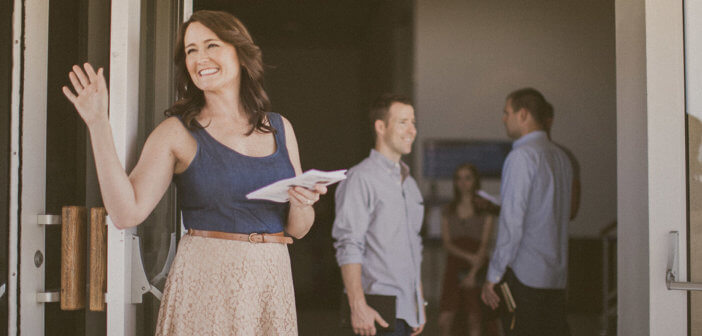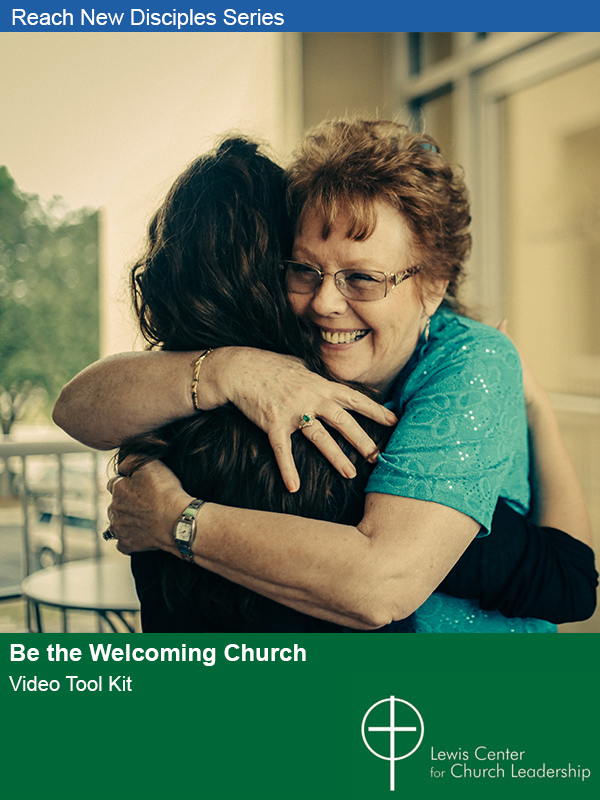Kay Kotan and Blake Bradford explain that a church visitor’s first impression is often formed long before they enter the sanctuary. So, hospitality needs to begin online, as people approach your location, and through casual encounters with your building.
We have all heard it said that you do not have a second chance to make a first impression. This is so true in the life of the church. But where do those first impressions occur in the church? We often are misled to believe the first impression is at the door of the sanctuary or perhaps the front door. We would challenge you that hospitality begins much sooner.
Online
Most likely, hospitality begins online. Yes, online! What kind of first impression would a guest receive from your church’s Facebook page? Your website? Are there stories of transformation and relationships, or simply pictures of an empty building? Most often social media is used for insider communication without much consideration for new persons. Have someone not affiliated with your church take a look at your online presence and give you some feedback.
Location
Next, we want to think about hospitality offered to someone approaching your church’s location. Is there directional signage to find the church, where to park, and what entrance to use? Is the guest being greeted in the parking lot, at the exterior entrance door, and at the sanctuary door? Is the interior signage adequate for guests to find their way easily around the facility, paying special attention to signage for restrooms, children’s ministries, and the worship area? Is there a congregation-wide culture of hospitality, or is hospitality left to the greeting team alone?
Worship
How about worship? Is worship designed to encourage new people to be comfortable and encounter Christ, or is it designed totally for the sake of those already in the church? Is the bulletin guest-friendly, or are we using insider or churchy language and acronyms? Think about announcements: are the content and delivery guest-friendly? Could a guest feel invited and easily figure out how to step into ministry and the congregation’s web of relationships?
Are pastoral prayers filled with references to Hazel’s surgery outcome or Bob’s grief while members nod in knowing agreement, and guests are left perplexed and mildly embarrassed by the sharing of private information? Do we forget we have guests among us and rush out the door once the benediction concludes, or do we intentionally offer an opportunity after worship for the forming of new relationships?
We often mistake friendliness for hospitality. It is rare that we, the authors, encounter a church where people are not friendly or at least polite. However, we often encounter a church that is friendly but fails to offer opportunities to form relationships. People can go almost anywhere to find friendliness, but most people are looking for something beyond friendliness. They are looking for relationships. They are looking for a place to belong.
Building
We must also think about our building as it relates to hospitality. Churches often allow outside groups to use the building. The imagined hope is that if people enter the building for another activity, they will somehow find their way to the life of the congregation, most often through worship. Yet we offer no intentional pathway for this to occur. Instead, we have the crazy idea that some Sunday morning, the person who goes to Scouts on Thursday night will wake up and suddenly decide to go to church on Sunday. Friends, this occurs rarely, if at all.
How does your church offer hospitality to groups who use the building so that there is an opportunity to build relationships? If a church is not willing to offer hospitality and opportunities for building relationships, then we must ask, with all due respect, why are you letting groups use the church? Issuing a key is not hospitality. Churches are not in the landlord business. We are in the people business. If we are not willing to invest in the people who use the building, then we must ask ourselves why outsiders are using the building.
Excerpted from Impact! Reclaiming the Call of Lay Ministry (Market Square Publishing Company, 2018) by Kay Kotan and Blake Bradford. Used by permission. The book is available at Cokesbury and Amazon.
Related Resources
- Pet Peeves of a Church Visitor by Greg Atkinson
- From Parking Lot to Pew: Turning Building Users into Worshipers by Kay Kotan and Phil Schroeder
- 50 Ways to Welcome New People, a free Lewis Center resource







